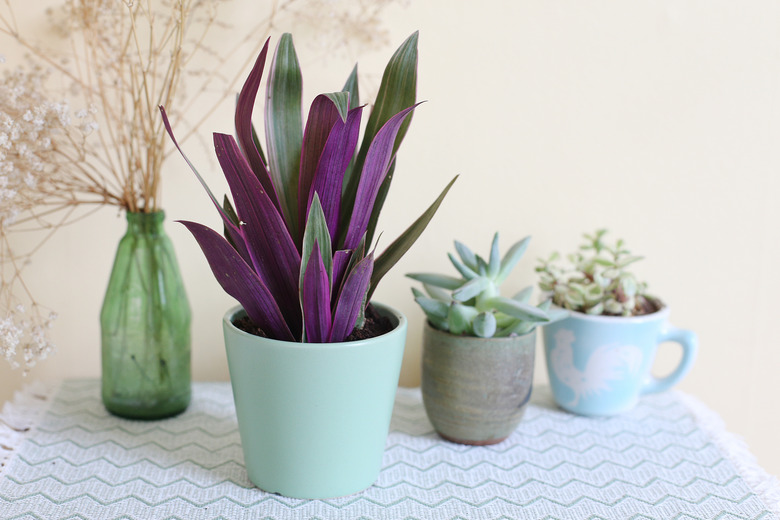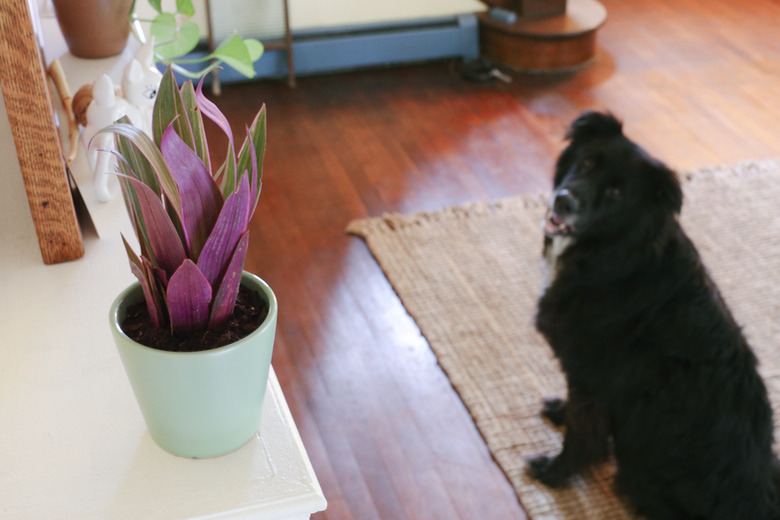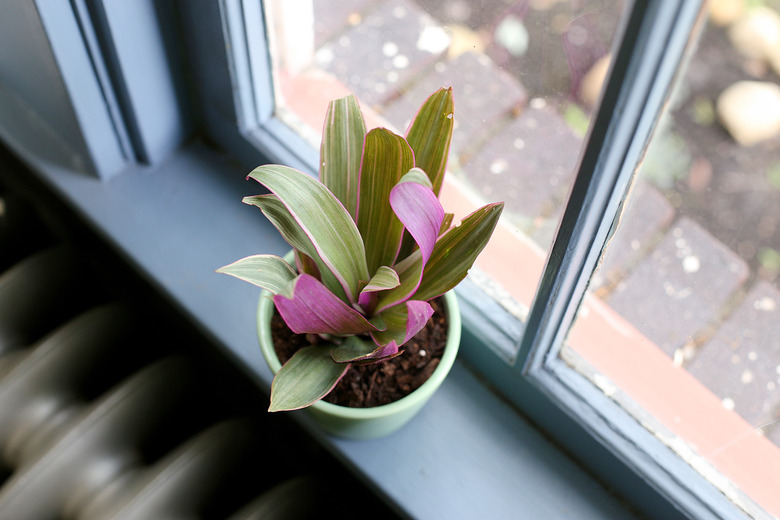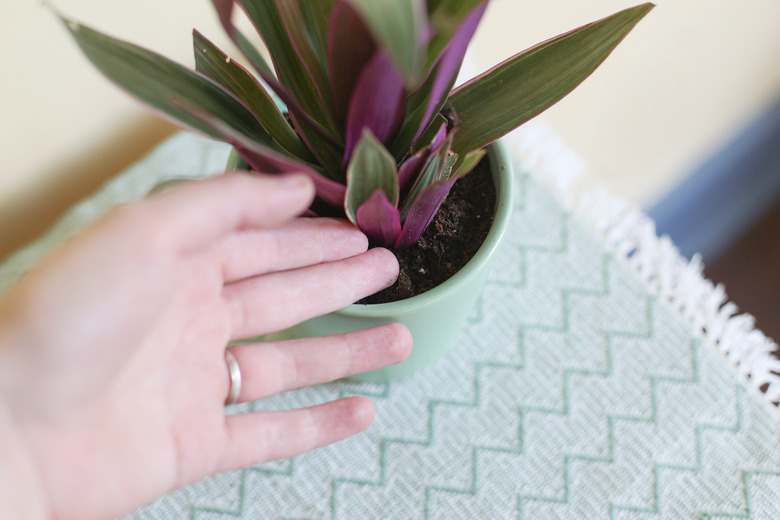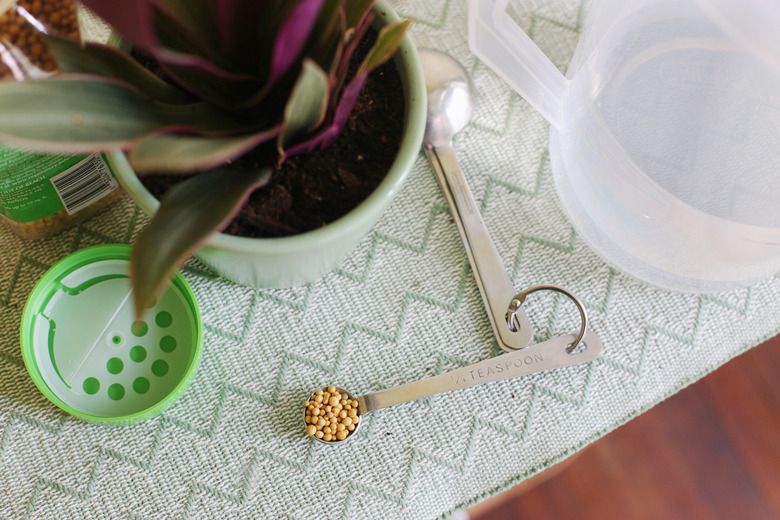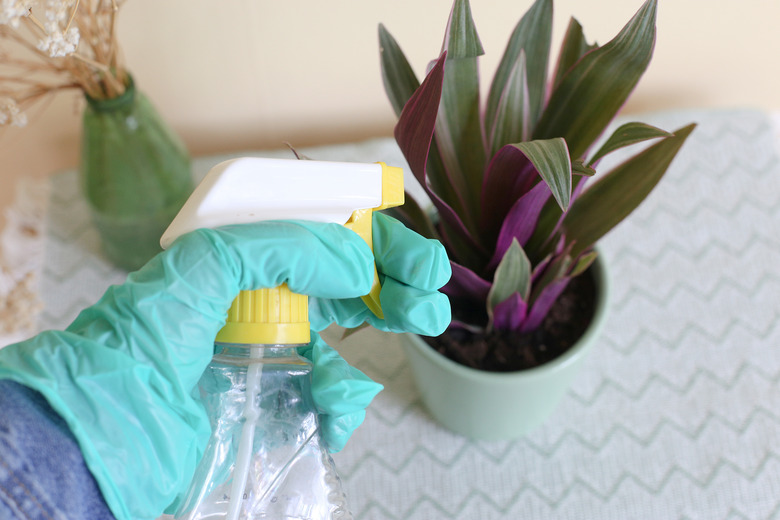Plant Care For Moses-In-The-Cradle
The Moses-in-the-cradle plant (Tradescantia spathacea) gets its interesting name from its flowers, which are small and white, and sit in a special leaf, called a bract, which resembles a dark purple boat. Also called boat lily, oyster plant, rhoeo tricolor, and Moses-in-a-basket, this plant grows outdoors in U.S. Department of Agriculture plant hardiness zones 9 through 11 and also does well as a houseplant. Easy to grow and tolerant of most environments, it forms short clumps of radiating, sword-shaped leaves in sun or shade and needs only basic care and consistent moisture to thrive.
Plant Moses-in-the-Cradle Plants Wisely
This plant can cause an allergic skin reaction in some people and pets and can be poisonous if eaten in large quantities, so it's not a good choice for an area where pets or children play.
It can also be invasive in some parts of the U.S., spreading into forested areas and preventing native plants from growing. Check before planting whether it's a good choice for your area. Manage its tendency to get out of control by removing spent flowers to prevent seed formation, and prevent spreading of the clump by surrounding it with a physical barrier that extends several inches into the soil.
Provide Proper Lighting
Moses-in-the-cradle grows to about 1 foot tall, spreading to form a clump up to 2 feet wide. It tolerates most lighting conditions, but it prefers filtered sun or partial shade. It can grow in full sun, but in areas with strong, hot summer sun, provide some shade in the afternoon to protect the purple leaves from scorching.
If you grow this plant indoors, it does best in bright, indirect light for at least six to eight hours each day. The windowsill of a lightly curtained, south- or west-facing window gives the plant good light without too much direct sun.
Water for Consistently Moist Soil
When grown in the garden, Moses-in-the-basket prefers consistently moist soil and requires good drainage. Although the plant can also tolerate dry spells once established, adding a 2- to 3-inch layer of organic mulch, such as straw or shredded bark, helps conserve soil moisture and also keeps down competing weeds. In warm climates, the plant continues growing slowly during cold weather, but it needs less water while it takes a rest.
If you grow Moses-in-the-cradle as a container plant, water it whenever the top 1 to 2 inches of soil feel dry to your fingertip. Never leave the pot in a water-filled saucer because this can encourage fungal problems. Always use a pot that has drainage holes. In fall and winter, allow the soil to dry slightly between waterings to give the plant a rest.
Fertilize and Prune
Moses-in-the-cradle doesn't need fertilizer when grown outdoors in fertile soil that's rich in organic content. You can give the plant a boost by mixing a 1- to 2-inch layer of compost into its soil each spring, but do this carefully to avoid disturbing the roots.
If you grow the plant indoors, fertilize it every three months with a balanced, 10-10-10 fertilizer, diluted at a rate of 1/4 teaspoon in 1 gallon of water. Check your product label for additional directions and to verify the dilution rate.
This plant doesn't require regular pruning, but you can trim back an outdoor-grown Moses-in-the-cradle each spring to keep it within bounds. Cut the plant back to a height of a few inches, wiping your blade with rubbing alcohol between cuts to prevent the spread of disease.
Avoid Common Moses-in-the-Cradle Problems
Moses-in-the-cradle is usually free of diseases when grown in well-drained soil, but it can attract a few pests. These include mealybugs, which are fluffy white insects, or tiny, winged whiteflies; spider mites, which aren't visible, also could produce weblike coverings on young leaves. Control these by spraying with ready-to-use insecticidal soap. Repeat every week or two as needed. Wear long sleeves, long pants, gloves, and eye protection when spraying plants.
